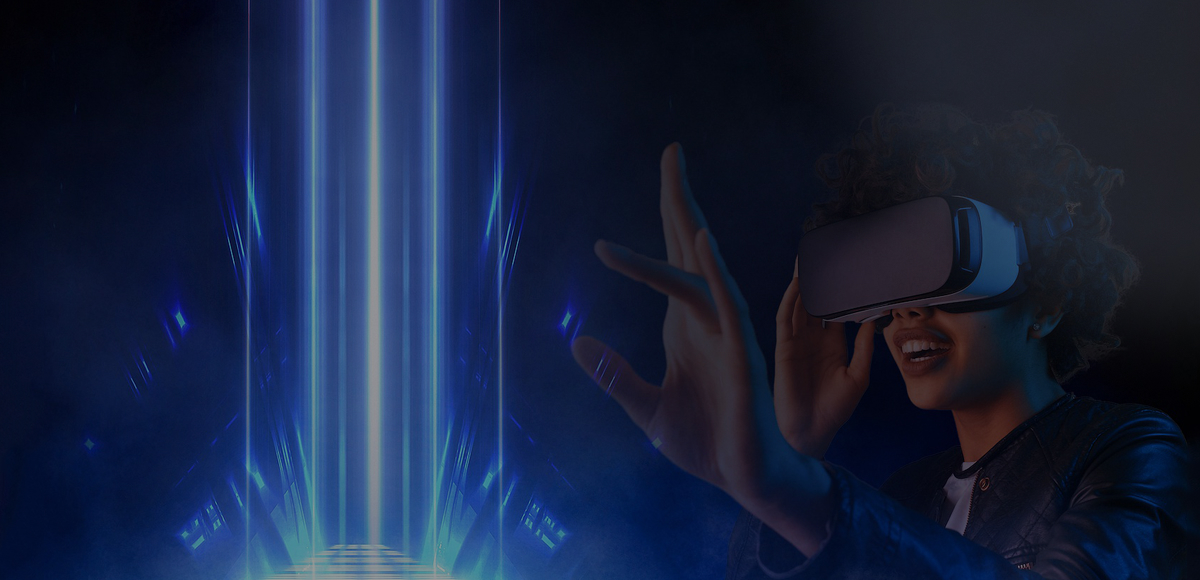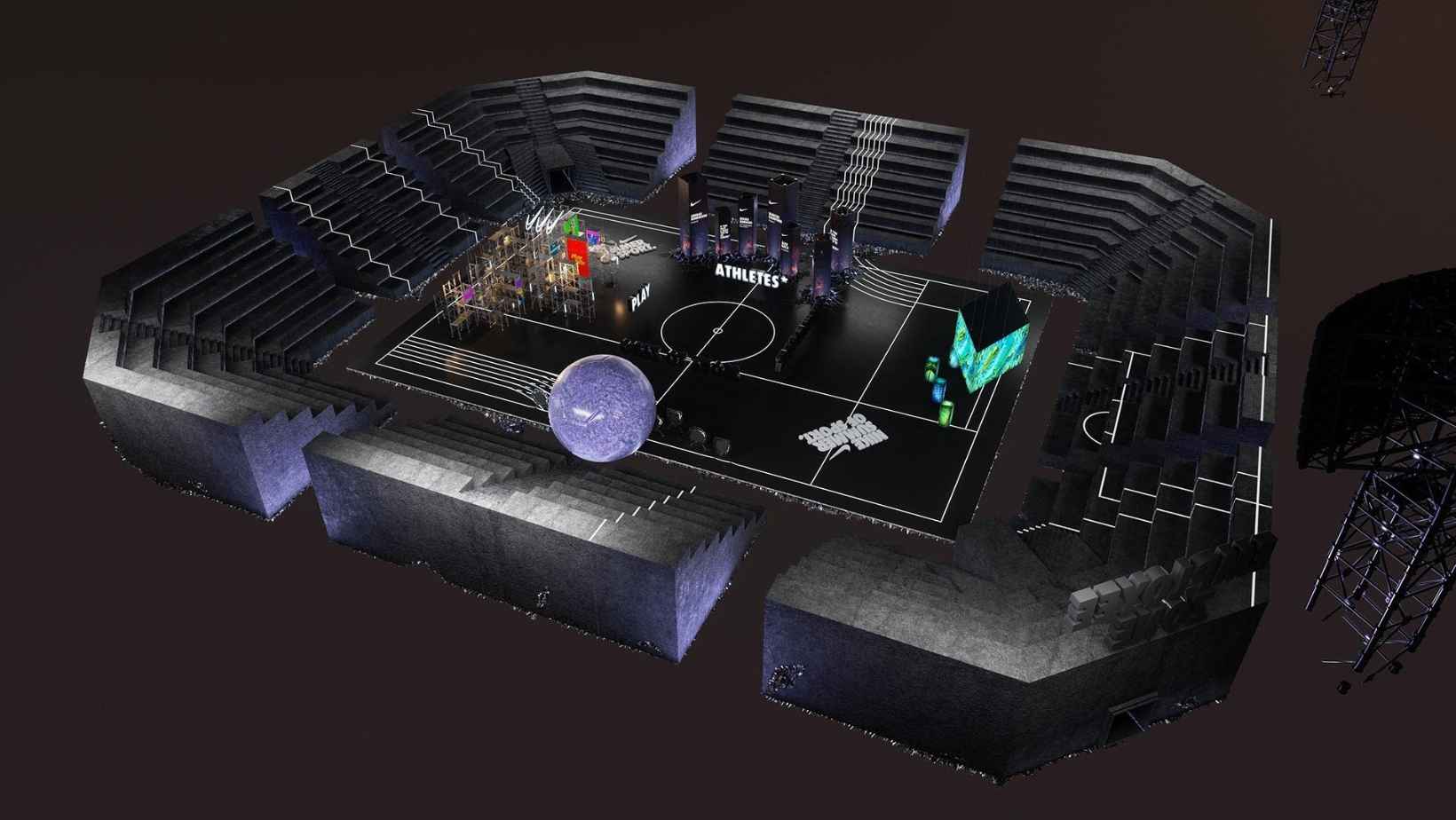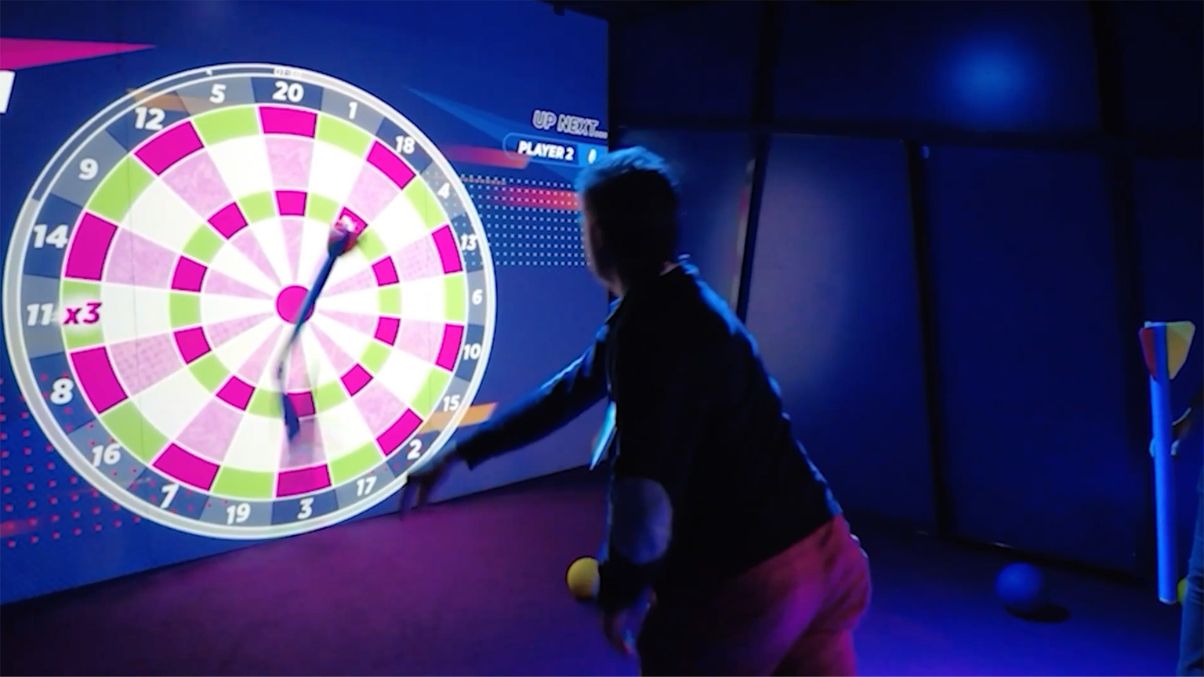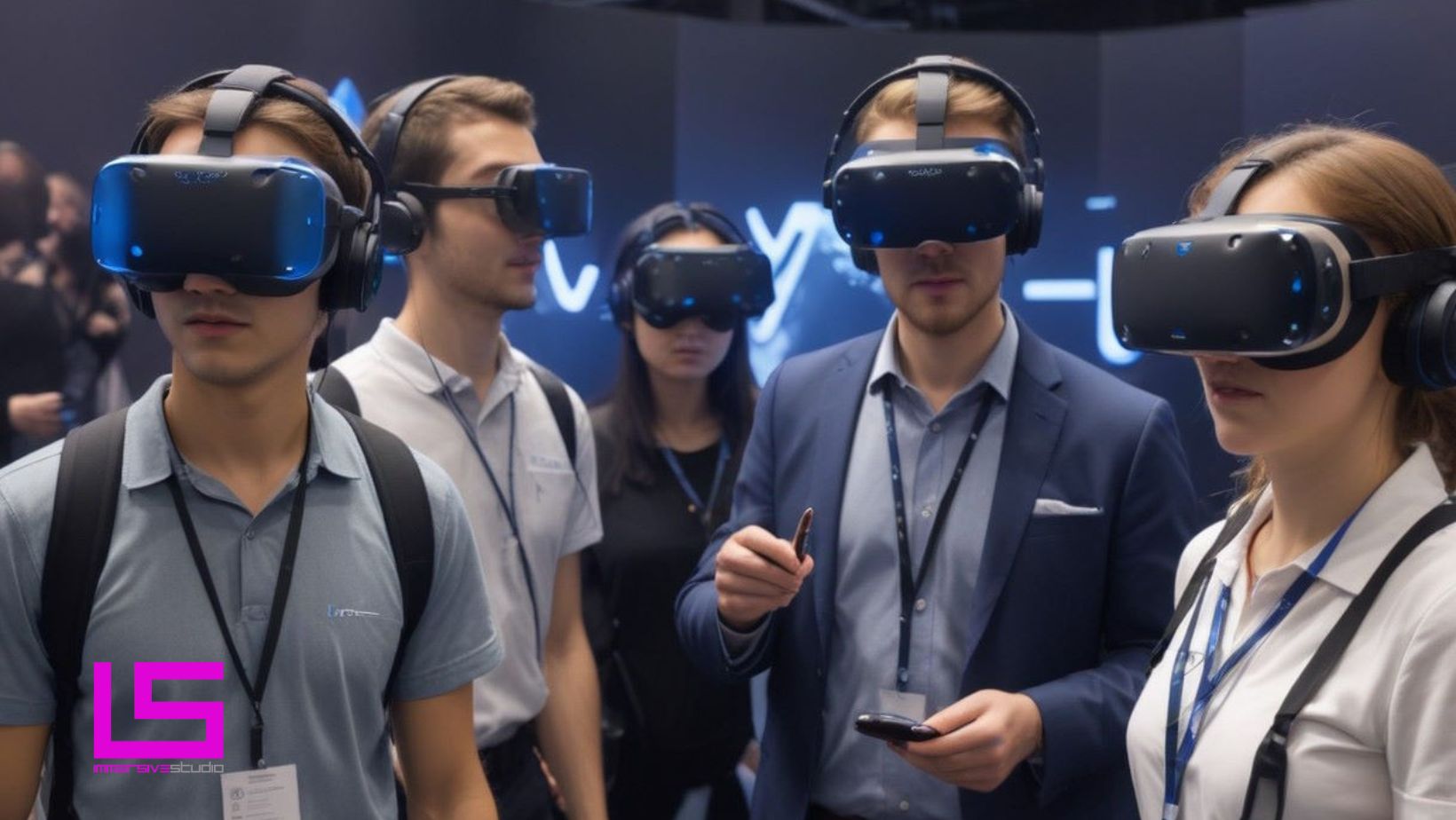
Top 10 AR Development Tools in Demand

Augmented Reality (AR) is revolutionising a multitude of industries, from retail to real estate, by offering immersive experiences that blend digital elements with the real world. The backbone of this innovative technology is the range of AR development tools available today, which enable developers to create sophisticated and engaging AR applications whilst virtualising products and service offering.
This article explores the top 10 AR development tools currently being used tody, with Immersive Studio providing insights into their capabilities and the specific advantages they offer to developers and businesses.
1. Vuforia
Vuforia is widely recognized for its advanced computer vision technology, exceptional in its ability to recognize and track image targets and 3D objects. This tool is indispensable for creating interactive and immersive AR experiences that need to be triggered by a real world object. It supports both Android and iOS devices and is particularly favoured for its robustness in varying conditions and its ability to work with a range of cameras. Industries such as manufacturing, marketing, and education find Vuforia particularly beneficial for its precision and versatility and was one of the original players in this market for B2C AR Apps but now it is more a heavy duty enterprise based solution.
2. EasyAR
EasyAR is another powerful AR development tools that enhances applications with features like motion tracking, environmental understanding, and 3D object detection. It stands out with its straightforward implementation process and supports a wide array of platforms including Android, iOS, and Windows. One of EasyAR’s major selling points is its cost-effectiveness, making it a popular choice among developers looking to deliver AR solutions without a hefty price tag.
3. Unity
Unity is perhaps the most popular game development engine that has extended its capabilities into the realm of AR, providing a comprehensive toolkit for AR development through its Unity 3D platform. With its user-friendly interface and extensive support community, Unity allows developers to create AR applications that are not only visually appealing but also interactive. Its compatibility with multiple AR development plugins, like ARKit and ARCore, makes it a versatile choice for developing cross-platform AR applications. The tool is widely used in gaming, architectural visualizations, and automotive simulations, where high fidelity and realism are crucial.
4. Vossle
Vossle is a newcomer to the AR development scene, distinguishing itself with a no-code platform that allows businesses to create AR experiences directly from their web browsers without any prior coding knowledge. This tool is particularly useful for marketing campaigns and retail showcases where speed and ease of deployment are crucial. Vossle supports a range of AR features such as image recognition and geolocation-based AR, enabling brands to launch interactive campaigns with minimal technical overhead. Its simplicity and quick deployment capabilities make Vossle an attractive option for businesses looking to quickly integrate AR into their strategies.
5. echo3D
echo3D has made a name for itself as a cloud-based AR development platform that focuses on streamlining the management and delivery of 3D content. By providing backend services and a database to handle AR assets, echo3D allows developers to focus more on the creative aspects of AR development without worrying about the underlying infrastructure. It supports real-time content updates and analytics, which are invaluable for large-scale deployments in sectors like gaming and healthcare. The platform’s ability to scale and handle complex AR experiences efficiently makes it a preferred choice for developers looking for robust and dynamic AR applications.
6. Hololink
Hololink offers a platform that is particularly focused on ease of use and accessibility in AR content creation. With its drag-and-drop interface, users can build AR experiences without a deep technical knowledge of AR development tools. Hololink is especially favoured by educators and content creators for its straightforward approach to creating interactive and educational AR content. The tool also offers extensive tracking and analytics features, allowing creators to measure the engagement and effectiveness of their AR projects. Hololink’s commitment to making AR development accessible to non-programmers has opened up opportunities for a wide range of users to experiment with and benefit from AR technology.
7. Spark AR
Developed by Facebook, Spark AR Studio is one of the most accessible platforms for creating Social based AR experiences that can be shared across Facebook and Instagram. It’s particularly popular for developing interactive filters and effects that enhance social media interactions. Spark AR provides a rich set of features, including face tracking, gesture recognition, and object placement, which allows creators to develop highly engaging and personalized AR experiences without the need for its users to install a standalone application, Spark AR sits neatly inside the Facebook and Instagram app which most people already have installed on their devices. The platform’s integration with popular social networks ensures that AR projects reach a wide audience, making it an essential tool for marketers and independent developers looking to tap into the vast user base of these platforms. However, there are some strict rules that brands need to check first if they are considering using Spark AR, as there are whole industries that are not allowed to develop content through Spark AR for e.g Pharmaceutical, Alcohol and cigarette brands to name a few.
8. SynergyXR
SynergyXR is designed to foster collaboration through extended reality (XR), encompassing AR, VR, and MR (Mixed Reality). It offers businesses a platform to create interactive and immersive experiences for team collaboration, training, and sales presentations in a virtual environment. SynergyXR is particularly effective for enterprise applications where teams are geographically dispersed. The tool provides functionalities such as virtual meetings, product demonstrations, and training simulations, making it a powerful solution for businesses looking to enhance communication and interaction through innovative AR technologies.
9. ARCore
Google’s ARCore has emerged as a key player in the AR development arena, enabling developers to build rich, immersive AR experiences. Its strength lies in its robust capabilities, including motion tracking, environmental understanding, and light estimation, which allow for the creation of AR experiences that interact seamlessly with the user’s environment. ARCore is extensively used in Android app development, offering developers a scalable way to integrate AR into mobile apps. This tool is crucial for applications requiring high fidelity and realistic interactions with the physical world, such as in gaming, interior design, and educational tools.
10. ARToolKit
ARToolKit is one of the pioneers in the field of AR development, providing an open-source library that helps developers integrate AR into their applications. It supports basic AR functionalities like marker recognition, which is used to trigger AR experiences based on specific visual cues in the environment. Despite newer tools in the market, ARToolKit remains relevant due to its flexibility, extensive documentation, and active community support. It’s especially useful for educational and experimental projects where developers may require a high degree of customization and control over the AR experience.
Noteworthy Nods
In addition to the top 10 AR development tools, it’s important to acknowledge a few other significant players in the AR development landscape:
- ARKit: Developed by Apple, ARKit is a robust framework for creating AR experiences on iOS devices. It excels in face tracking, scene understanding, and adding motion capture to AR applications, making it ideal for high-quality AR apps on Apple products.
- Kudan: Kudan offers a lightweight and efficient AR SDK that supports both markerless and marker-based AR. Its rapid image recognition and support for 3D object rendering make it suitable for applications that require quick and accurate AR overlays.
- 8th Wall: Distinguished by its ability to work across both Android and iOS platforms without the need for an app, 8th Wall is a web-based AR tool that allows for the creation of AR experiences that are accessible via a standard web browser. This capability is particularly appealing for marketing campaigns aiming to reach a broad audience without the barrier of app downloads.
- Blippar: Is a leading technology company specialising in Augmented Reality (AR). Since 2011, they have been pushing the boundaries of what is possible in AR and have helped thousands of brands, retailers and agencies harness these technologies. They provide access to an AR ecosystem with products and professional services to meet specific business needs. The software allows you to custom build any App or Web-based AR experience.
These tools, though not in the primary list, are significant for their specific strengths and situations where they might be the best fit, providing additional options for developers looking to tailor their AR projects to specific needs and platforms.
Conclusion
These AR development tools offer a wide spectrum of functionalities and specializations, catering to a broad range of industries and applications. From robust, enterprise-level solutions like SynergyXR to accessible, social media-integrated platforms like Spark AR, each tool has unique attributes that make it suitable for specific types of AR development tools. As the demand for AR applications continues to grow across various sectors, choosing the right tool can significantly impact the success and effectiveness of an AR project.
Incorporating AR technologies not only enhances user engagement but also provides innovative solutions to real-world problems, whether it’s in training, marketing, product visualization, or interactive learning. With the advancement of AR development tools, we can expect further improvements in usability, accessibility, and functionality, paving the way for more immersive and impactful AR experiences.
Innovate with Immersive Studio
For developers and businesses eager to harness the transformative power of AR which has been described as the next big disruptor in the history of technology, Immersive Studio offers expert guidance and state-of-the-art AR & immersive solutions across allof the above platforms as we believe in being software agnostic which it comes to delivering projects for clients tailoring our solutions to your unique requirements. Whether you’re a seasoned developer or a business exploring AR for the first time, Immersive Studio can help you navigate the selection and implementation of the right AR development tools. We encourage you to reach out to us for a free consultation, where we can discuss how to integrate AR technologies into your projects effectively.
Don’t hesitate to explore each tool’s capabilities and how they could serve your specific needs. Together, we can unlock the full potential of AR, creating more immersive, engaging, and impactful experiences. You can also drop us a message on Facebook, LinkedIn, or Instagram.


